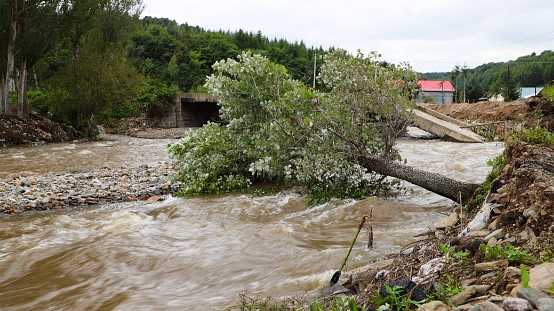A recent study published by Nature Climate Change (1) found that 58% of infectious diseases confronted by humanity worldwide have been at some point aggravated by climatic hazards.
Ongoing greenhouse gas (GHG) emissions are intensifying numerous climatic hazards of the Earth’s climate system, which in turn can exacerbate human pathogenic diseases.
On the one hand, it is increasingly recognised that GHG emissions have consequences on a multitude of climatic hazards of the Earth’s system, such as warming, heatwaves, droughts, wildfires, extreme precipitation, floods, sea level rise, etc. On the other hand, there is a wide diversity of pathogens and types of transmission, such as vector-borne, airborne or direct contact diseases, that can be affected by those hazards.
The combination of the numerous climatic hazards with the numerous pathogens reveals the potentially large number of interactions in which climatic hazards could aggravate human pathogenic diseases; with the set of viable interactions, or interactions for which empirical data exist, approximating the total extent of human vulnerability to climate change as it relates to infectious diseases.
The compilation of pathogenic diseases aggravated by climatic hazards represents 58% of all the infectious diseases that have impacted humankind worldwide.
The authors found 1,006 unique pathways in which climatic hazards, via different types of transmission, led to pathogenic diseases: warming (160 unique diseases), precipitation (122), floods (121), drought (81), storms (71), land cover change (61), ocean climate change (43), fires (21), heatwaves (20) and sea level (10) were proved to influence diseases triggered by viruses (76), bacteria (69), animals (45), fungi (24), protozoans (23), plants (12) and chromists (9). These diseases were primarily transmitted by vectors (103 diseases), although case examples were also found for transmission pathways involving water-borne (78), airborne (60), direct contact (56) and foodborne (50 diseases).
Whilst numerous biological, ecological, environmental and social factors contribute to the emergence of a human disease, at the most basic level it depends on a pathogen and a person coming into contact, and the extent to which people´s resistance is diminished or the pathogen is strengthened by climatic hazards. On the other side, habitat disruptions caused by warming, drought, heatwaves, wildfires, storms, floods and cover change were also associated with bringing pathogens closer to people.

Amor Escoz Roldán. Senior Environmental Health Technician,
Environmental Science Specialist, Environmental Educator and PhD in Education Sciences
.



